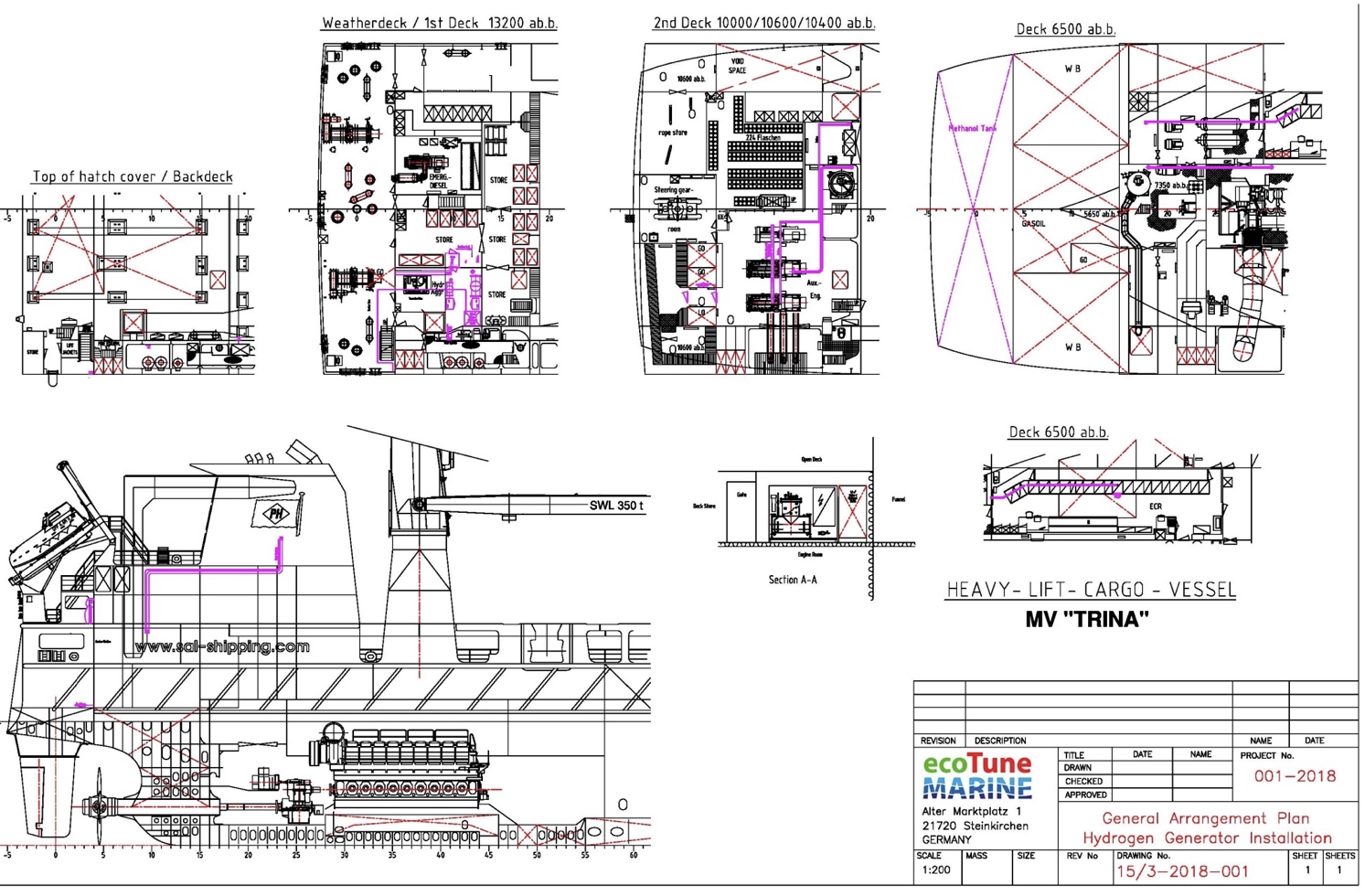FS MARINE+ had the following requirements that have been addressed to the satisfaction of the class (DNV GL):
- Hydrogen handling
- In absence of official regulations: combination of IGF code and guidelines for low flashpoint fuel apply)
- Low flashpoint fuels have to be transferred through enclosed spaces with double walled pipes with second barrier monitoring
- Methanol handling
- In absence of official regulations: guidelines for low flashpoint fuel apply
- Low flashpoint fuels have to be transferred through enclosed spaces with double walled pipes with second barrier monitoring
- HazID
- HazID has to be performed as part of the project and is included in the system price for the single ship approvals
Following parts have been addressed at the MV Annette and are subject to the specific customer vessel:
- Alarm System Integration
- FS MARINE+ will be fully integrated into the existing alarm system
- Ventilations / Compressed Air / Water
- FS MARINE+ is monitoring all components and interfaces (for voltage / current / pressure / temperature, etc.) of the auxiliary systems and is able to interact with the alarm system to provide corresponding notifications / alarms to the ship operator.
- FS MARINE+ had the following requirements that have been addressed to satisfaction of the flag state (Antigua & Barbuda):
- A&B allowed the installation of the technology as long as the regulations of the class have been met



